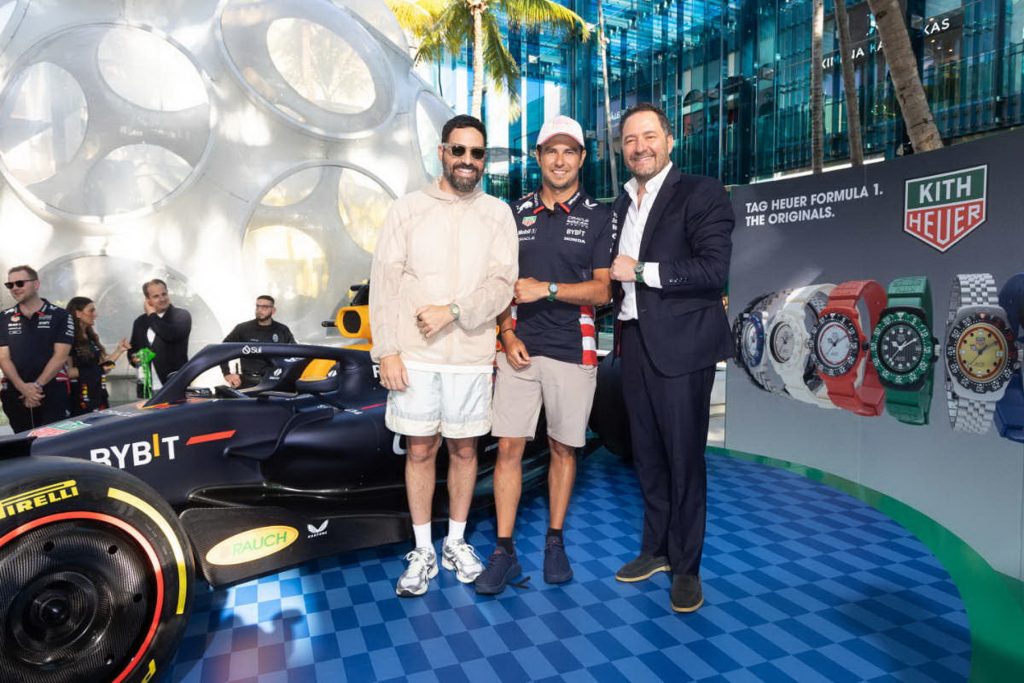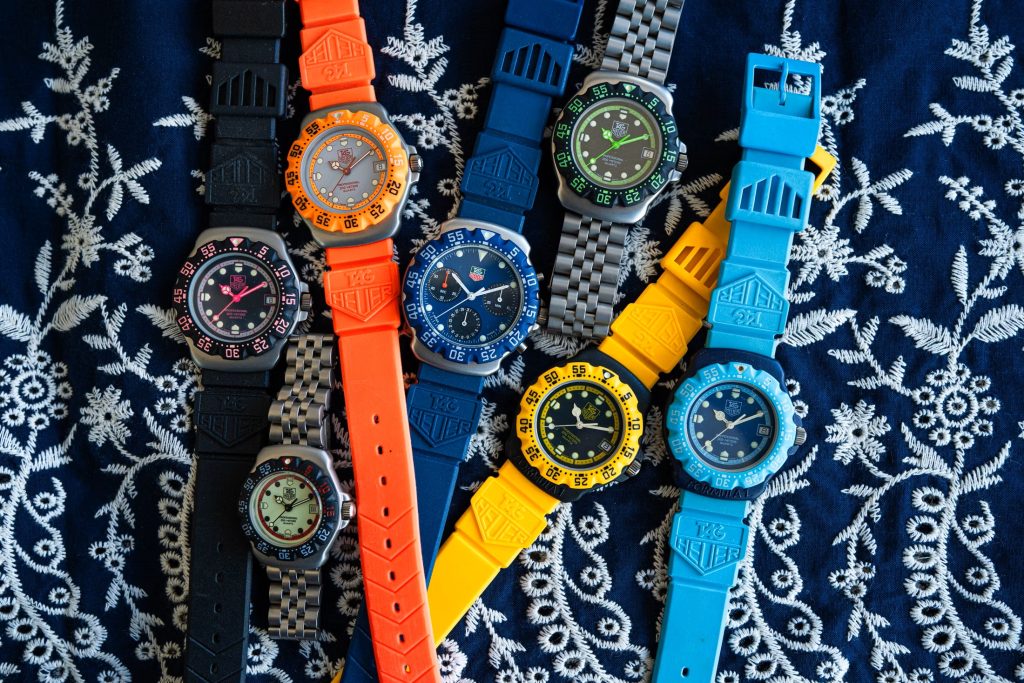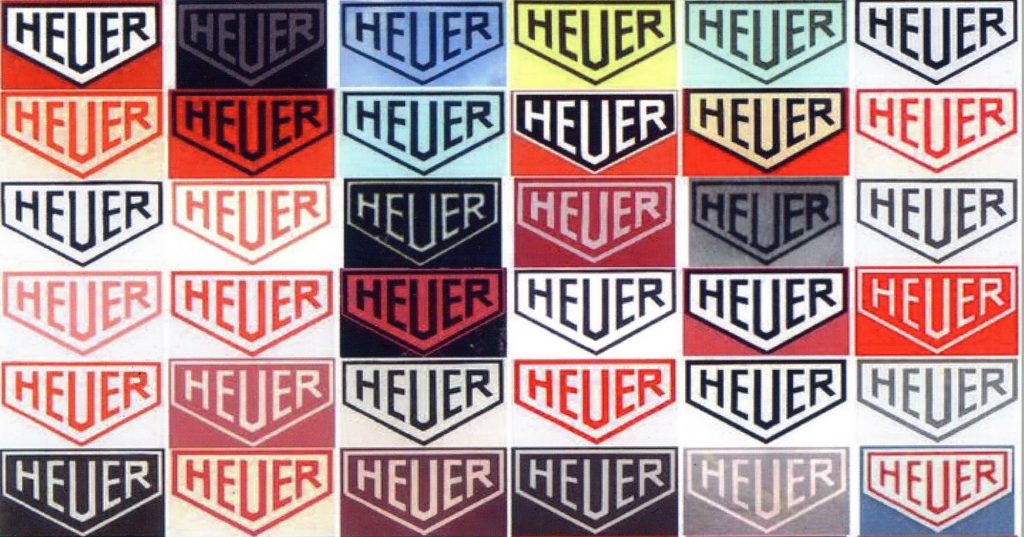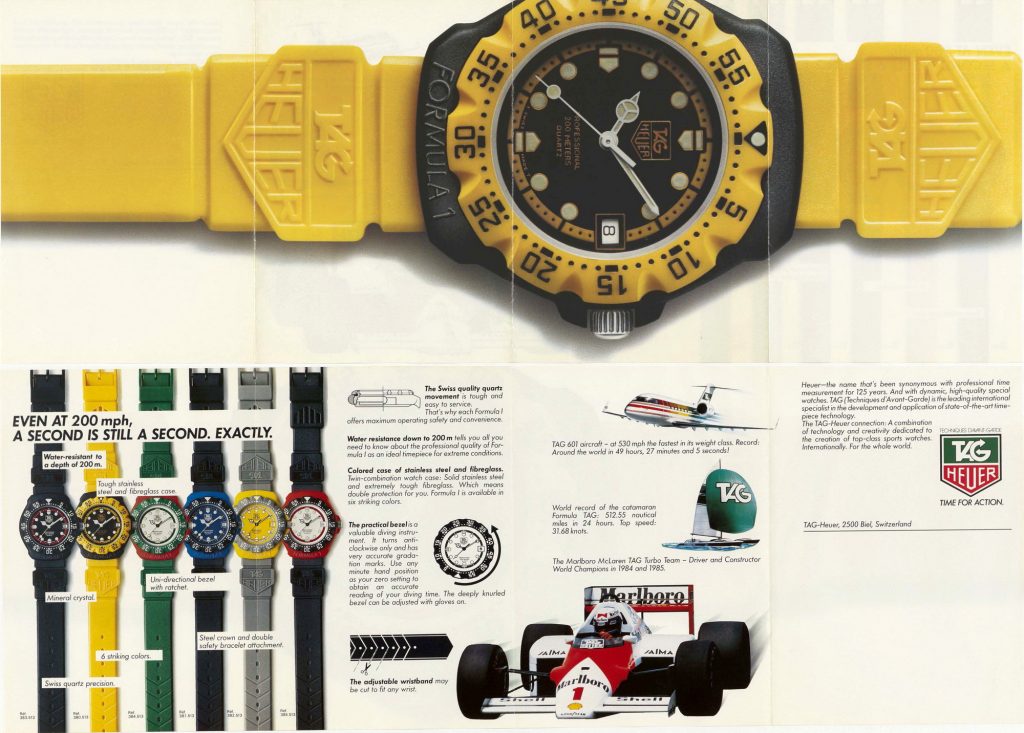One month ago, TAG Heuer and Kith released their new version of the Formula 1 watch. This new watch was based on the first-generation Formula 1 watches, the first collection introduced by TAG Heuer after the acquisition of Heuer by Techniques d’Avant Garde in 1986. These early Formula 1 watches were a wild success, with TAG Heuer selling 3,000,000 of the watches, from 1986 through 1995, at a price of $137.50.
Now in its 38th year, the Formula 1 collection is TAG Heuer’s longest running continuously-produced collection.
TAG Heuer created 10 versions of the new Formula 1 watch, with seven models sold exclusively through Kith, two models sold exclusively through TAG Heuer and one model sold through both channels. All were limited editions, with production for each model ranging from 250 to 1,350 pieces, with the price set at $1,500.
In addition, TAG Heuer produced 75 boxed sets of all 10 models, priced at $18,000. In total, TAG Heuer produced 5,750 watches for this collaboration, and they sold out quickly.
I began following TAG Heuer 25 years ago and can confirm that no other watch introduced by the brand has generated the amount of discussion and debate as the Kith Heuer Formula 1 watch. With the group-think that fuels much of the watch media and some watch communities, this debate about the new Formula 1 focused on three questions — First, why did TAG Heuer do the collaboration with Kith? Second, why was the watch priced so high? Finally, why did they incorporate “Kith” into what was previously the TAG Heuer logo?
Over the last month, I have written a lot about the Kith Heuer Formula 1, in website postings, on social media, in responding to inquiries from journalists and in casual conversations with other collectors. As we bring the month to a close, I’ll address these three FAQs, as well as a fourth question that drew little discussion – where will TAG Heuer go from here, with the Formula 1 collection?
All the usual suspects wrote about the TAG Heuer x Kith collaboration and the new Formula 1 watch. Here are three favorite pieces that present the dynamics of the collaboration:
- Brynn Wallner on Highsnobiety — Let’s Unpack the Kith x TAG Heuer F1 Watch
- Johnny Davis on Esquire UK — The Inside Story of the Tag Heuer X Kith F1, the Hottest Watch of the Moment
- Cam Wolf on GQ — TAG Heuer and Kith Are Bringing Back a Beloved ’80s Sport Watch.
Hodinkee provided the back-story of the TAG Heuer x Kith collaboration in its episode of Talking Watches with Ronnie Fieg.
And if you want to read absolutely everything about the background of the newest Formula 1, see our posting — The Formula 1 Reader — TAG Heuer (1986) and KITH Heuer (2024).
Question One — Why the Collaboration with Kith?
In recent years, TAG Heuer has done collaborations with a broad range of partners, from the usual suspects, such as Porsche, the Indianapolis 500 and Red Bull Racing, to niche brands like Malbon Golf (luxury golf apparel) and Rowing Blazers (preppy-inspired apparel for rowing, rugby and polo). While partnerships in motorsports, golf and rowing are naturally consistent with TAG Heuer’s position as a maker of watches for sports, the partnership with Kith – a streetwear retailer with stores primarily in the United States – drew some questions.
For the old-time TAG Heuer enthusiasts, especially those outside the United States, the common question was “What’s Kith?” For watch enthusiasts who are familiar with Kith, the question was, “Why Kith”? The Kith enthusiasts, however, asked an entirely different question — “How do I get one of these watches?”
In considering the benefits reaped by the collaboration partners, we’ll start on the TAG Heuer side of the ledger. No doubt, most Kith enthusiasts had heard of TAG Heuer prior to May 1, 2024, but I expect that most of them had never considered actually buying a TAG Heuer watch (or perhaps any other Swiss luxury watch). Through the collaboration with Kith, TAG Heuer sought to reach a group of younger consumers willing to spend more freely for “cool” brands (i.e., Generation Z rather than Millennials). One month after the launch of the collaboration, there’s no doubt that it was “mission accomplished” for TAG Heuer. Kith loyalists lined up at the company’s stores, flooded its website and even went so far as visiting TAG Heuer Boutiques and exploring the TAG Heuer catalog, to learn about the Formula 1 watches.
In addition to the Kith crowd, TAG Heuer Boutiques also reported visits from the generation of watch enthusiasts who remembered buying the Formula 1 three decades ago, and had since become serious watch collectors, favoring TAG Heuer as well as some far more expensive Swiss brands. For these collectors, the Kith Heuer Formula 1 was a nostalgia play.
With only 11 stores in the United States and four in the rest of the world, Kith benefitted from the worldwide publicity that the launch attracted. The launch was centered around the May 5 Formula 1 Grand Prix in Miami, with TAG Heuer staging what amounted to a takeover of the Formula 1 weekend.

TAG Heuer lives in the world of motorsports, and Kith was its special guest for the Miami race weekend, making a strong debut on the Formula 1 stage. Racers and other celebrities were wearing the Kith Heuer watches; the Red Bull Racing cars carried the Kith Heuer logo on worldwide television; and Ronnie Fieg shared the spotlight with the top TAG Heuer executives and celebrities.
Question Two — Why Were the Watches Priced at $1,500?
At a lunch last week, I showed my nice new Kith Heuer Formula 1 watch to a vintage watch collecting buddy. He liked the look of the watch, but when I told him that it cost $1,500, he laughed out loud, right in my face. And it’s fair to say that his reaction was representative of the folks who collect vintage watches, as evidenced by discussions in various groups of collectors.
Knowing nothing about the cost of producing watches or about the factors that go into setting their retail prices, I believe that the Kith Heuer Formula 1 watch was reasonably priced.
I expect that the cost of producing the Kith Heuer Formula 1 watches was relatively high. This is a newly-developed watch (i.e., a launch model), incorporating high-quality components, produced in 10 different variations.
Within these 10 SKUs, TAG Heuer used three different cases; 10 different dials; 10 different bezels; a stainless steel bracelet and a rubber strap. Despite developing 10 variations, production of each was limited to a relatively small number of watches, with seven of the versions limited to 250 or 350 pieces. So, TAG Heuer incurred relatively high costs, which had to be spread over a total of only 5,750 watches. Given the quality of the components, the limited scale of the production and other costs associated with the collaboration, math dictated that the price per watch would be higher than if the new Formula 1 had been a standard catalog model.
Watch collecting traditionalists should also not lose sight of the fact that Kith is a “luxury” streetwear brand. If the bucket hats are selling at $450, the hoodies at $1,000, and the denim jackets at $2,000, the Kith Heuer Formula 1 watch fits in nicely at $1,500. Luxury streetwear is a different market than luxury watches, and the quick sell-out of the Kith models confirms that these watches were priced properly.
Kith collaborations typically sell out quickly, and then fetch a premium in the after-market, and the new Formula 1 watches have achieved both these milestones. While there is variation between some of the models, one month after their release, most of the 10 models appear to be selling in the range between $1,800 and $2,500, validating the original $1,500 price.
Question Three — Why Did TAG Heuer Incorporate “Kith” into the Logo?
TAG Heuer has a complicated history when it comes to the logos that appear on the dials of its watches. From 1860 through 1985, it was fairly simple. Ed. Heuer & Co. and then Heuer-Leonidas used the simple “Heuer” shield on the dial.
When Techniques D’Avant Garde (TAG) completed the acquisition of Heuer in 1986, the company was renamed “TAG Heuer” and it created a new “TAG Heuer” logo to be used on the dials of watches.
Even after it began using the TAG Heuer logo, however, the company has used the simple “Heuer” shield for various heritage-inspired models.
Over its entire history, we have seen the company use a variety of co-branded / double-signed dials (for example, with retailers such as Tiffany), we have seen the names and logos of collaborators (such as streetwear brand, Fragment), and Heuer had a long history of making watches with other brands’ logo under private-label arrangements (such as Abercrombie & Fitch).
Still, we have never seen either Heuer or TAG Heuer modify its logo by inserting the name of a third party into the shield. Some would say that the shield has been sacred.
As I think about the TAG Heuer shield becoming the Kith Heuer shield, I ponder the change that TAG Heuer undertook in 1986, when it placed very loud “TAG” in a bright green rectangle above the 126-year-old “Heuer” shield, now placed in a red pentagon, to create the new TAG Heuer logo. Of course, there were no bloggers or social media channels back in 1986, but I can almost hear the screaming that this change might have provoked. They would have been screaming about three things – TAG acquiring Heuer, the crazy new logo, and the price of the new Formula 1 watches (as the $139 was a multiple of the price of the 1980s Swatch watches). So yes, the three-prong screaming in May 2024 echoed what I can imagine we would have heard back in 1986. Everything that’s old is new again!
Now, 38 years after the creation of the TAG Heuer logo, we can appreciate a bold move that seemed to pay little respect to all that had come before it. Maybe this is the right perspective for “Kith Heuer”. Kith has collaborated with many of the world’s most powerful brands, and if Kith was allowed to mess with the logos and IP of Coca-Cola, BMW and even Fruity Pebbles, who was TAG Heuer to say “no”?
Kith enthusiasts want to see the Kith name presented prominently on its collaborations, not hidden on the back of the watch case. If Kith wanted its name incorporated into TAG Heuer’s sacred shield, that was a compliment to TAG Heuer, not a threat.
TAG Heuer chief marketing officer George Ciz and heritage director Nicholas Biebuyck suggested that it’s the strength of the TAG Heuer brand that enabled the company to become “Kith Heuer” for one collaboration, for one glorious weekend in Miami. The TAG Heuer brand has been strengthened by this collaboration, and is well-positioned for whatever might be next for the Formula 1 collection.
Question Four – What’s Next for Re-Issues of the Formula 1 Watch?
Most folks who reviewed the Kith Heuer Formula 1 watch focused on the three questions that we have covered above, but perhaps it’s a fourth question that is even more interesting – “Where do we go from here?”
When we look at the energy and resources that TAG Heuer put into the collaboration with Kith — not only producing the watches but introducing them to the world — we have to assume that the company’s objective was something more than selling 5,750 watches during the first week of May 2024.
The Formula 1 collection is now in its 38th year, with many models having gone through multiple generations. The focus on the first generation models, which were discontinued almost 30 years ago, seems to have breathed new life into the entire collection.
People visiting TAG Heuer Boutiques to look at the Kith Heuer models admired many of the other colorful watches in the Formula 1 collection. Still, the love shown for the first generation models suggests that these early watches should inspire new versions of the Formula 1. Making the one-to-one copies of the case and bezel might have been the easy part; now, TAG Heuer will have to decide the next step in the progression.
In the End, It’s all About the Stories.
Recently, a friend and I were discussing the importance of storytelling for today’s watch brands. TAG Heuer has the racers, Omega has the moon landing, Breitling has the pilots, Zenith has the attic, and Audemars Piguet has Gerald Genta. These stories are compelling for customers and communities are formed around them.
Looking back over the past month, perhaps the real power of the TAG Heuer x Kith collaboration was in the stories that were told. Ronnie Fieg showed his collection of vintage Formula 1 watches on Hodinkee, and explained how his mother bought him one, as his first real watch.
Each of the Kith-exclusive watches was tied to a specific Kith store, with the colors and details evoking these markets (sand for Miami, the rainbow for Hawaii, etc.). TAG Heuer enthusiasts visited the Boutiques, recalling how they had purchased their first Formula 1 watches almost 40 years ago. Stories were told and watches were sold. It’s that simple.
More than telling the old stories, however, the power of the TAG Heuer x Kith collaboration may lie in the new stories that came out of the launch weekend. Yes, watch enthusiasts like the stories and it is especially powerful when the launch itself becomes the story.
Whether it was attending the race and parties in Miami, lining up at Kith stores, participating in Kith’s online drawing, or scheming with friends to find the watches, we can expect that in the year 2030 (and maybe even in 2050), Kith and TAG Heuer enthusiasts will be reminiscing about how they bought these watches in May 2024. The odds are that these enthusiasts will be buying more watches (and more streetwear) all along the way.
Jeff Stein
June 6, 2024























